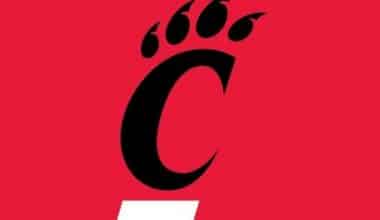Some logo designs are so common that we don’t stop to consider what they’re actually meant to represent. Sure, some don’t require much thought (we’re pretty sure the Apple logo is an apple), but others, like the Walmart logo, are a little more abstract.
Some believe they are looking at a flower, while others believe they are looking at the sun. However, according to a blog post on the company’s website, those yellow circles represent something entirely different. This article will show you what the Walmart logo represents and where it came from.
Let’s set the ball rolling right away…
Overview
The company’s name has been the focal point of the logo design since its inception. The logo has undergone several changes, including fonts, color, and, most importantly, orthography.
In reality, the logo was made to divide the word in a stylish way, but these days we look for meaning everywhere, even when there is none. The hidden message of the Walmart logo is thought to represent six sparks. And each spark, in turn, represents ideas that help the company succeed. They also remind me of Sam Walton, who had faith in himself and his ability to succeed.
Today, we all seek this kind of inspiration, and customer inspiration is also a part of Walmart’s logo meaning.
Because the target audience is diverse, the logo is simple and straightforward. And the more diverse the group, the more difficult it is to meet all of their needs. But Walmart’s logo looks warm and bright, which makes it seem like shopping there will be a good time. Such logos are often appropriate, and as a result, they are well-remembered by customers, which is what those logos are intended for, right?
What Exactly is Walmart?
Walmart is the name of an American hypermarket chain that was founded in 1962 and has since grown to become one of the largest companies in its segment, with over 10,000 stores worldwide. The company operates in 24 countries, with different names for each location.
Walmart’s History
Walmart’s legendary founder, Sam Walton, opened his first retail store in Bentonville, Arkansas, in 1950. Walton immediately implemented an unrivaled yet simple business strategy. He reduced his prices significantly below those of his competitors. It reduced his profit margins, but Walton was confident that it would pay for itself in increased sales. He was correct, and by 1967, Walton’s business model had proven to be successful enough to support 24 different stores across Arkansas.
By 1985, Walmart had 882 stores across the country, with $8.4 billion in sales that year. And by 1988, Walmart had become the most profitable retailer in the United States.
In 1988, Sam Walton stepped down as CEO of the company, handing over the reins to David Glass. Despite the fact that Walmart was already very successful, it grew very quickly in the 1990s. In 1990, Walmart had $32 billion in sales and locations in all 50 states. In 1991, the company opened its first store outside of the United States in Mexico City, Mexico.
Walmart hasn’t looked back since. Walmart generated $482.1 billion in revenue in 2016 with 5,229 US stores and 6,300 international stores, a figure that is even more impressive given the stiff competition Walmart has faced in recent years from e-commerce rivals such as Amazon and Jet.com.
Along with staggering revenue, Walmart is also one of the world’s largest employers, employing approximately 2.2 million people worldwide. This, along with the company’s never-ending list of charitable contributions and the positive impact the company’s low prices have had on the lives of shoppers all over the world, makes Walmart a success that goes beyond the zeros in front of a dollar sign.
But what role did Walmart’s logo play in this success, and how did it come about?
The Walmart Logo
The Walmart logo has evolved through several iterations over the years. Sam Walton’s first logo was fairly simple, with little emphasis placed on its design. The company experimented with several different designs over the years, mostly deciding whether to hyphenate the company name in the logo to read “Wal-Mart,” separate it with an asterisk to read “Wal*Mart,” or push the words together to read “Walmart.” Despite the fact that all of these designs were used over the years, the company eventually settled on the latter in 2008.
Today, the company’s logo features the word “Walmart” in all lowercase letters, accented on the end by a yellow sunburst known as “the spark.” This is the sixth version of the company’s logo, and it was reportedly designed to entice higher-income families to shop at the store.
Anand Kumar, a marketing professor at the University of South Florida, said of the new logo, “People aren’t going to change stores because of a logo, but the old one associated Walmart with cheap.” This, along with store improvements, will aid in changing perceptions.”
Meanwhile, Linda Blakley, a spokeswoman for the Bentonville, Arkansas-based company, commented on the new logo, saying, “We wanted something softer, friendlier, and warmer.” Walmart Spark embodies our company’s spirit: innovation, inspiration, and people working harder to reduce prices.”
If nothing else, the many changes to the Walmart logo and the reasons behind them show how important details like logo design are to a successful company like Walmart.
Who Designed the First Walmart Logo?
Walmart’s first logo was not designed by anyone in particular, as it was not something that Walmart’s founder, Sam Walton, had given much thought to.
Indeed, during the first two years of Walmart’s existence (1962–1964), the font and color scheme used for the word Walmart were ultimately determined by whoever was in charge of printing the advertisement document at the time!
The Evolution of the Walmart Logo
1962-1964: The First Version of the Walmart Logo
It was straightforward, with no elaborate features or details. This logo was simple, with only blue letters spelling out the store name.
1964-1981: The second Version of the Walmart Logo
The second Walmart logo included more stylistic elements, such as lettering that resembled a western theme. This second version also included a hyphen to separate “Wal” and “Mart.”
1981-1992: The Third Version of the Walmart Logo
Walmart decided to rebrand and go in a different direction 20 years after the western-themed logo. This logo had a bold appearance and font, but it still included the hyphen in the name.
1992-2008: The Fourth Version of the Walmart Logo
Walmart went for a more modern look in this iteration, switching out the hyphen for a star. Walmart has also returned to the blue color scheme. This fourth version can still be seen on many storefronts as the company works to replace it with the most recent version.
2008 – Present: The Fifth version of the Walmart Logo
This fifth version saw the most drastic changes. In 2008, the logo was changed to lowercase letters, followed by a yellow sunburst known as “the spark.”
This logo was created as part of Walmart’s rebranding to appeal to a more affluent audience. While logos alone will not cause shoppers to change their behavior and begin shopping at a store, they can help change people’s perceptions.
This new version is softer, friendlier, and warmer. The Bentonville, Arkansas-based chain’s spokeswoman, Linda Blakley, stated that the sunburst addition embodies their company’s mission of “innovation, inspiration, and people working hard to bring prices down.”
The Evolution of Walmart
1962: Wal-Mart is founded
Sam Walton opened his first Wal-Mart store in Rogers, Arkansas, on July 2, 1962. Walton was a businessman and a former employee of J. C. Penny. Walton experimented with physical storefronts before founding Wal-Mart, opening his first non-Wal-Mart retail store in 1950. In these stores, he tried out what would become Wal-claim Mart’s to fame: offering lower prices than all of his competitors. This straightforward business model initially hampered his profit margins, but his sales quickly made up the difference.
When it came time to open the first Wal-Mart location, Walton was inspired by the names Ann & Hope and FedMart.
1967-1969: Wal-Mart Begins to Expand
Walton’s business model of offering lower prices than his competitors proved successful enough for him to open 24 stores in Arkansas by 1967. These stores generated a total of $12.7 million in revenue. Wal-Mart was incorporated as Wal-Mart Stores, Inc. two years later, in 1969.
1970–1979: Wal-Mart Becomes a National Chain and Expands their Offerings
In 1970, shortly after Wal-Mart was incorporated, its first stock was sold as a publicly traded company for $16.50 per share. The stock was listed on the New York Stock Exchange by 1972. Their stock market success was a direct result of the company’s growth.
Wal-Mart’s first distribution center and Home Office opened in Bentonville, Arkansas, in 1971, and by 1972, Wal-Mart had its best year of sales yet, generating $78 million from 51 stores (including stores outside of Arkansas). Wal-Mart kept growing. In 1978, it opened its first pharmacy, and in 1979, it started the Walmart Foundation.
1980-1988: Wal-Mart Doesn’t Slow Down
Wal-Mart reached $1 billion in annual sales to begin the next decade. This was faster than any of their competitors, as well as any other company previously. The number of stores owned by Wal-Mart was what drove these sales. In 1980, Wal-Mart had 276 stores and 21,000 employees.
In 1983, Wal-Mart opened its first Sam’s Club location in Midwest City, Oklahoma. Sam’s Club was unlike Wal-Mart in that it offered bulk products, but it was also like Wal-Mart in that it offered low prices. In the same year, Wal-Mart replaced its cash registers with computerized point-of-sale machines. Five years after surpassing $1 billion in sales, Wal-Mart achieved $8.4 billion in 1985 and expanded their chain even further across the country with 882 stores.
Sam Walton stepped down as CEO the same year the first Wal-Mart Supercenter opened in Washington, Missouri, in 1988. David Glass took over for Walton.
1991–1998: Wal-Mart Becomes the Top National Retailer and Expands Globally
In 1991, Wal-Mart expanded globally after successfully opening stores in all 50 states and achieving record sales of $32 billion. This year, they opened their first Sam’s Club in Mexico City, as well as their first optical location in the United States.
More stores followed suit throughout the 1990s, with locations in Canada, China, and the United Kingdom. Wal-Mart also had its first $100 billion sales week in 1997, demonstrating its success.
2000-2019: Wal-Mart Adapts and Stays Relevant
In the year 2000, the internet took off, and Wal-Mart responded by creating an online experience for their customers. In 2016, Wal-Mart also introduced Walmart Pay, which allows customers to make in-store payments using their smartphones. That was just the start of their reaction to the changing times. Wal-Mart went on to expand into Japan, India, South Africa, and Chile, pledged to be an environmentally sustainable company, provided free shipping, and surpassed $400 billion in annual sales.
During the 2000s, their leaders changed many times, and they bought a number of companies, such as Jet.com, Moosejaw, ModCloth, Bonobos, Parcel, Shoes.com, and others. Wal-Mart Stores, Inc. changed its legal name to Walmart Inc. in 2018. John Furner was named President and CEO just before the pandemic.
Design Elements of the Walmart Logo
Prior to the unveiling of the most recent Walmart logo, the company used a logo with a red, white, and blue color scheme in an attempt to invoke patriotic appeal to their still largely USA-centric customer base. The most recent logo was created with a soft blue and yellow color scheme to be more welcoming and inviting to their customers all over the world.
At the same time, Walmart was trying to change its image as a low-cost, low-class company, so the change was also needed for that reason. Even though the old logo was fine, Walmart knew that changing logos was an important part of changing their image and associations, so they chose a completely new design to be the new face of the rebranded company.
Linda Blakely said it best when it came to the purpose of the spark in the logo: the spark is a symbol for innovation and inspiration, both of which have propelled the company forward over the years.
The Popularity of the Walmart Logo
When you run a company as large and influential as Walmart, everyone has an opinion about everything you do. People were angry when Walmart decided to use the new logo. They said the design was boring and said it looked like everything from an asterisk to a sphincter.
Whether or not the design for Walmart’s new logo was inspired, it served its purpose well. In Walmart’s case, the new logo did not have to be completely unique and innovative. It simply had to be different from their previous one, representing a new beginning and a new direction for the company.
This is an important lesson for anyone thinking about rebranding. If you want to drastically change your company’s image, you must get rid of everything that people associate with the company’s previous branding. People will have a hard time seeing it as any different if it is still represented by the same logo, no matter how much its mission, function, and marketing change. Walmart executives recognized this and chose a new Walmart logo to represent their company in the future.
Walmart Logo Font
Aside from the frontier font, Walmart has primarily used a sans-serif font in recent iterations. This font is a simple sans-serif variant with thick, simple lines and smooth angles. The font in the current logo is Myriad Pro-Bold, which retains the manly elements from the previous sans-serif variations.
Walmart’s Logo Color
Walmart’s logo color has changed from blue to black to brown and back to blue. The most recent iteration used a softer blue and yellow color palette. The goal of this color scheme was to make customers around the world feel more welcome and inviting, while also attracting new customers due to its aesthetically pleasing nature.
Walmart’s Logo Elements
The only symbol that has ever appeared in the Walmart logo is the sunburst, which was added recently. This sunburst represents six sparks, each representing an idea that has made Walmart so successful. Furthermore, the sunburst was chosen to represent Walmart’s efforts to be an environmentally friendly company.
Walmart Today
Since the opening of its first store in 1962, Walmart has not slowed down. Walmart is now one of the world’s largest employers, with nearly 2.2 million employees worldwide. It also keeps coming up with new ideas, like Walmart+, a membership program that will help customers save even more money when it starts in 2020.
Walmart has moved forward with new partnerships, acquisitions, investment opportunities, and charitable contributions. With over 5,200 stores in the United States and over 6,000 stores worldwide, Walmart has generated hundreds of billions of dollars year after year and has no plans to slow down anytime soon.
Walmart’s Business Lessons
Walmart demonstrates an important lesson in logo redesign. Unlike some companies that undergo major rebranding, Walmart’s logo has only received minor updates over the years. While some may consider Walmart’s logo to be uninspiring and plain, it has endured because it works for the brand.
Walmart never needed to release a logo that was completely unique or innovative; it just needed to be distinct enough from their previous logo. Even minor changes signaled a new beginning and direction for Walmart.
Examine your current logo if you are thinking about rebranding your company. Is it only certain elements that can be updated? Is it just a few elements that don’t seem to be connecting with your audience? Your first thought might be to change your company’s logo in a big way, but this might not be necessary. That was the case at Walmart. They realized that they needed a new logo to show off their new strategy, but they didn’t have to change their image too much. They were able to show how their company’s vision had changed by adding a new font, color, and soft features to their logo over time.
As a business owner, you understand the importance of making decisions about your company’s branding. It is easier said than done to create a logo that represents your company’s mission, vision, and purpose. Our goal at Hatchwise is to make this process as simple as possible for you. All you have to do is start a logo contest at Hatchwise, and our team of professionals will provide you with countless options from which to choose your new logo.
What Are the Hex Codes for the Colors in Walmart’s Logo?
The hex codes for Walmart’s color scheme are as follows.
- Walmart’s dark blue hex code is #004c91, medium blue hex code is #007dc6, and light blue hex code is #78b9e7.
- The hex code for the orange used by Walmart is #f47321, and the yellow color is #ffc220.
- Walmart’s darker green color, titled ‘Fresh Product Dark Green,’ has the hex code #367c2b, and the slightly lighter shade of this type of green is #76c043.
Why Does Walmart Use Blue in its Logo and Store Design?
According to researchers, the color blue has been shown to evoke feelings of serenity, peace, and calm, which may be why Walmart chose the color blue for their branding!
Blue is also a gentle color that does not strain or hurt the eyes and does not overstimulate your senses!
This means that everyone can enjoy Walmart without feeling stressed or overwhelmed, making Walmart an inclusive store.
Why Did Walmart Change Its Logo Colors?
Walmart changed its logo colors in recent years to return to its original blue color as a nod to the store’s traditional and friendly nature.
Because Walmart sells cheap items at very low prices, the light blue color draws attention to the store’s clean look.
The addition of the bright yellow spark adds an iconic element to the Walmart logo, making it more memorable with an uplifting color scheme and design.
What Is Walmart’s Slogan?
Walmart’s current official slogan is “save people money so they can live better.” This statement is repeated in both Walmart’s mission statement and their advertising and public relations campaigns!
This slogan is a slight adaptation of what Walmart’s founder, Sam Walton, said when receiving the Presidential Medal of Freedom from President George H.W. Bush in 1992.
What Are Walmart’s Four Core Values?
Walmart’s four core values are as follows:
- Customer service
- Individual dignity
- Strive for excellence and
- Integrity
Walmart places a high value on instilling these core values in its employees and has created staff and store policies to support these points.
People also say that Walmart’s own brand colors and design layout help keep these core values alive by making every Walmart store a respectful and welcoming place for everyone.
Conclusion
To summarize, Walmart has lent its logo to help convey a family-friendly and welcoming atmosphere to its stores. The design changes made over the last few decades demonstrate the brand’s convergence to popular marketing trends in order to stay fashionable and up to date!
The history of the Walmart logo reveals some interesting facts about Walmart’s founder, Sam Walton, and shows how Walmart’s brand mentality is woven into every design aspect, both in advertising and in store design!
Related Articles
- Trade Name: Simple Guide to Trade Name Registration in the UK
- Can I Write a Check to Myself? Simple Steps to Do This Effortlessly!!!
- Walmart Affiliate Program: Reviews, Payouts, and How To Join
- HOW TO SELL A PRODUCT: Effective Steps & Strategies in 2022.






